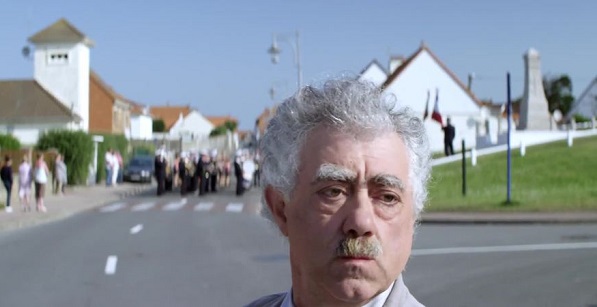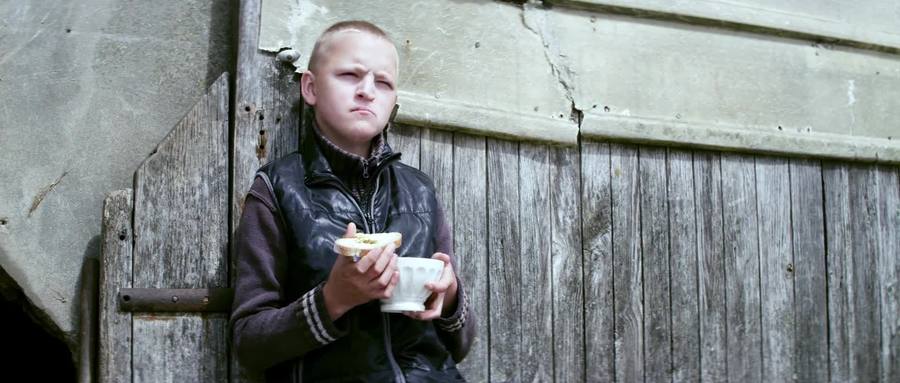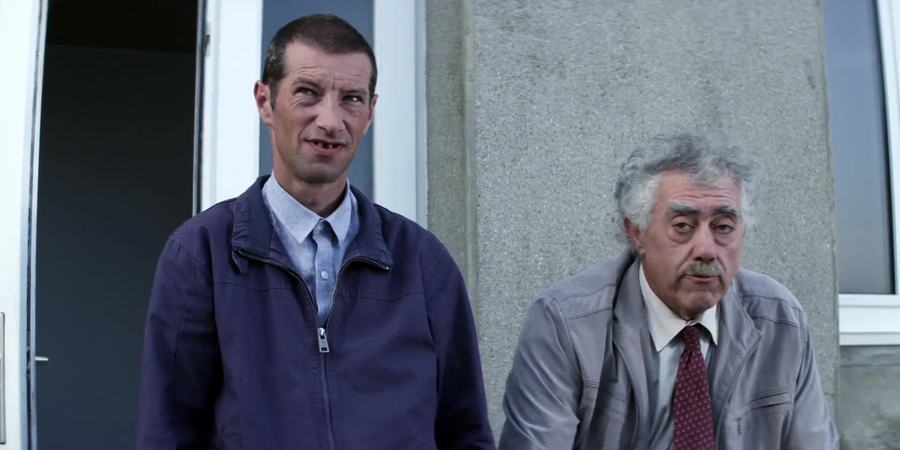American TV generally isn’t a safe space for auteurists. With a few exceptions, like Louie (entirely written, directed by and starring Louis C. K.), the voices of writers and show-runners tend to drown out directors’ signatures. The French mini-series Li’l Quinquin may not exactly be “un film de Bruno Dumont,” but it’s instantly recognizable as his work. He’s put his personal stamp on these windswept vistas of rural northern France. Still, working for the small screen has led to a certain mellowing out. Li’l Quinquin isn’t free from grotesquerie, but it’s one of Dumont’s most humanist works.
In an image out of a Pink Floyd album cover, a dead cow is airlifted by helicopter from an old bunker. There’s a corpse inside the corpse—a headless dismembered woman has been placed in the cow. Two cops—Lt. Carpentier (Philippe Jore) and Cpt. Van der Weyden (Bernard Pruvost)—investigate the case. Their work is also observed by Quinquin (Alane Delhaye), a young boy with lots of time on his hands and a large collection of firecrackers. Although he’s an altar boy, he loves pranks and making trouble in his spare time. He and his friends cycle around, watching Carpentier and Van der Weyden’s work.
Dumont hasn’t adjusted his style at all for the small screen. Li’l Quinquin includes plenty of long shots that would be hard to make out on small sets. The combination of natural beauty and human misery isn’t new to the director; indeed, it goes back to his first film, The Life of Jesus. However, the TV context changes it somewhat. Rather than fitting into an austere Bressonian tradition, Li’l Quinquin seems to fall into the lineage of Twin Peaks and the British mystery Broadchurch.
Li’l Quinquin also introduces something new to Dumont’s work: a sense of humor. He’s always had a feel for absurdism, shown in scenes like the one where Emmanuel Schotte’s character levitates in Humanité. Li’l Quinquin pushes this into outright slapstick. This change of attitude is apparent from the very start, when Quinquin is given a cup of milk and told not to spill it. Naturally, the boy drops half of it on the ground. Even a funeral scene is played for laughs, as a microphone can’t stop producing feedback or stay in place. Despite the murders taking place, danger somehow seems distant. When a firecracker goes off in a boy’s hand, he doesn’t lose a finger or seriously hurt himself; he merely suffers a minor burn.
In a casting call for the next season of True Detective, Jore and Pruvost would get shown the door immediately. They’re not Matthew McConaughey and Woody Harrelson. If Dumont’s broad characterizations and sense of humor sometimes recall the Coen brothers, he’s far closer to reality than their films ever get. (This extends to the use of spoken vernacular French, translated in the subtitles in terms like “Cap’n.”) Dumont’s use of nonprofessional actors has raised eyebrows, with some critics even wondering if Schotte or his character in Humanité were mentally challenged. It’s true that a person who acts as oddly as he does probably wouldn’t get far in any police force.
Jore and Pruvost are not telegenic. The former is going bald and missing most of his teeth. The latter keeps twitching his eyebrows and has a mustache just slightly larger than Hitler’s. Granted, the twitch may be a deliberate piece of character acting, but it looks like an involuntary tic. I’m not mocking the actors’ appearance; on the contrary, it’s refreshing to see people who look like they’d run from the plastic surgeon’s knife starring in a TV series. But this tendency to cast ordinary-looking people is another long-standing Dumont trait.
There’s been a lot of talk recently about how “TV is the new cinema,” which is true largely if your idea of great cinema is a certain kind of 1970s American film. The Sopranos was as good as The Godfather or Martin Scorsese’s gangster films; at its best, The Wire managed to synthesize Frederick Wiseman and Sidney Lumet’s interest in how institutions function (and often fail to do so). But it’s hard to imagine what avant-garde TV might look like. Li’l Quinquin isn’t quite it, but it’s heartening to see a filmmaker like Dumont work in TV without giving up his highly recognizable style or compromising in other ways. Indeed, the medium seems to have given Dumont a chance to grow.
Fandor unveils Li’l Quinquin one episode at a time, while Kino Lorber will be releasing the full 200 minutes theatrically early next year.







